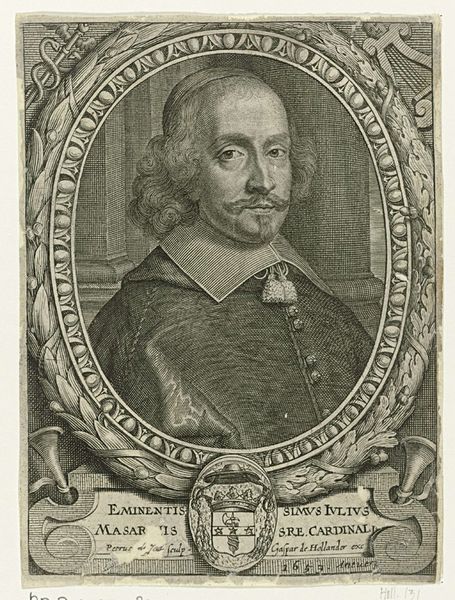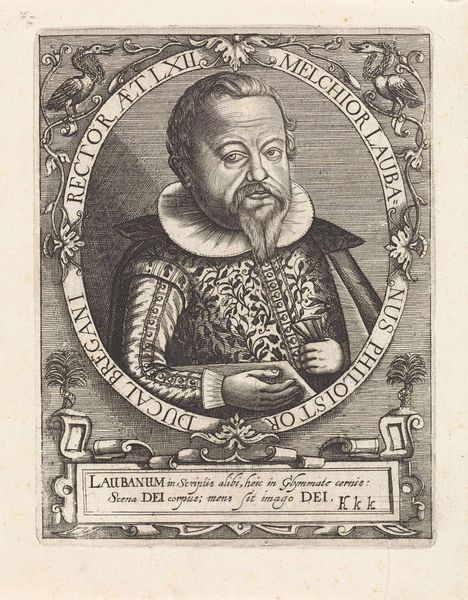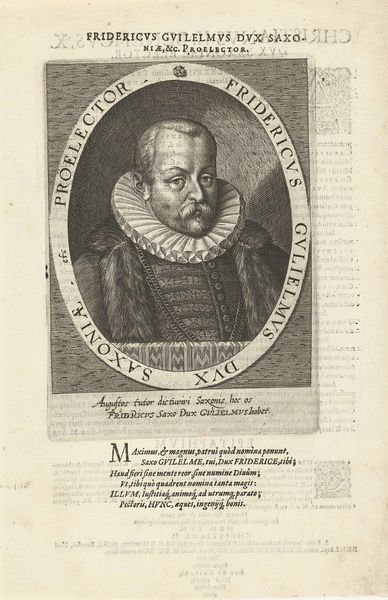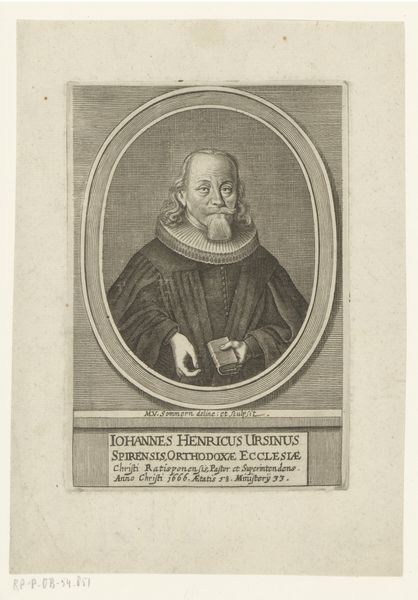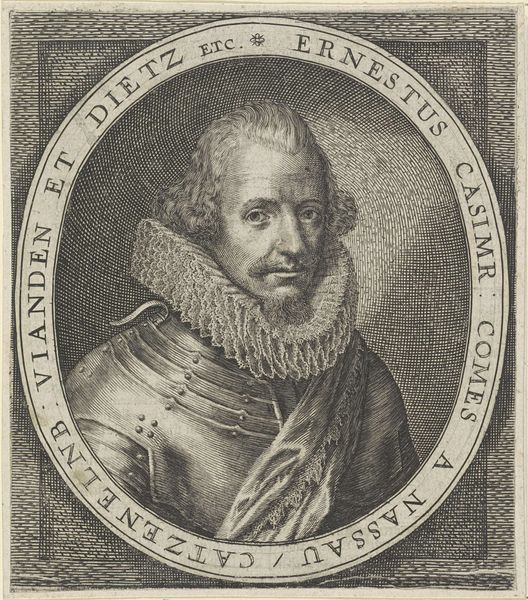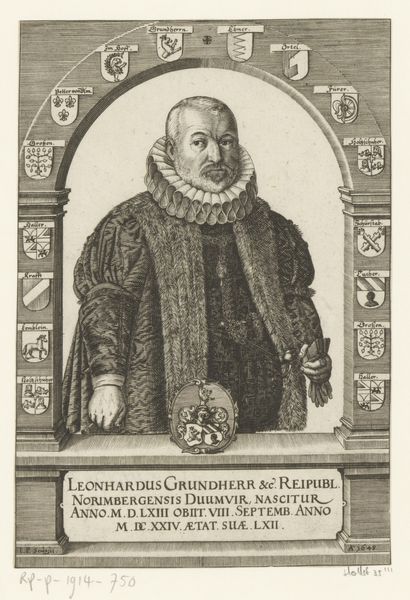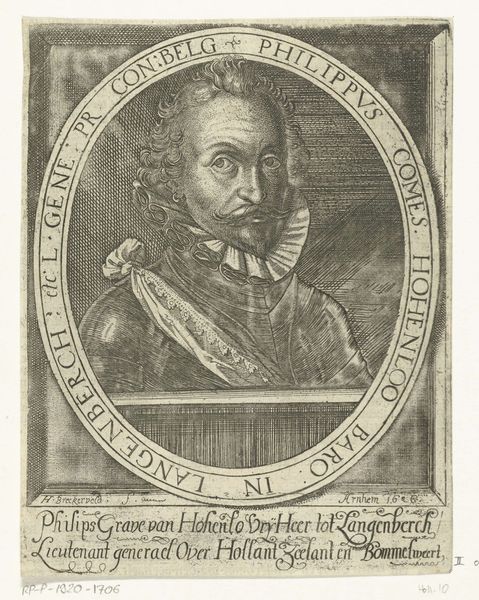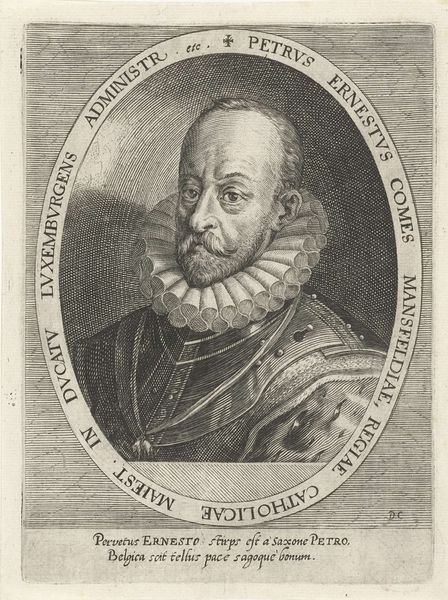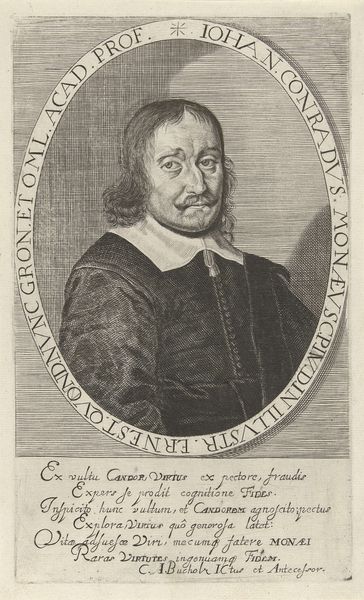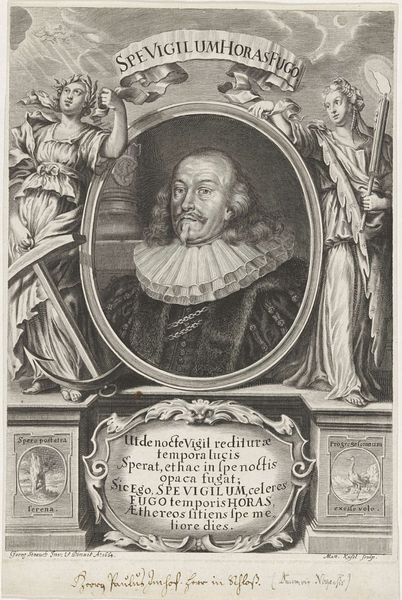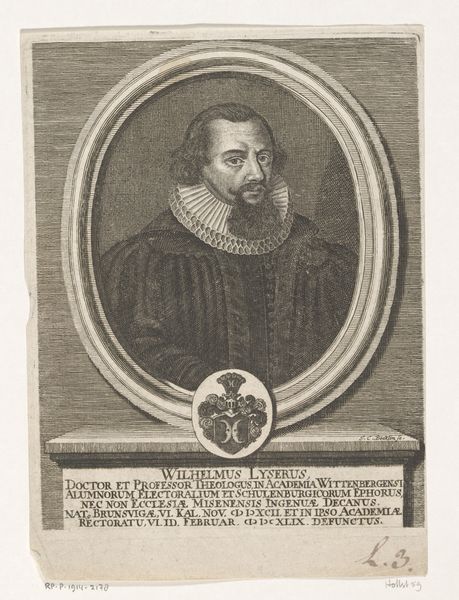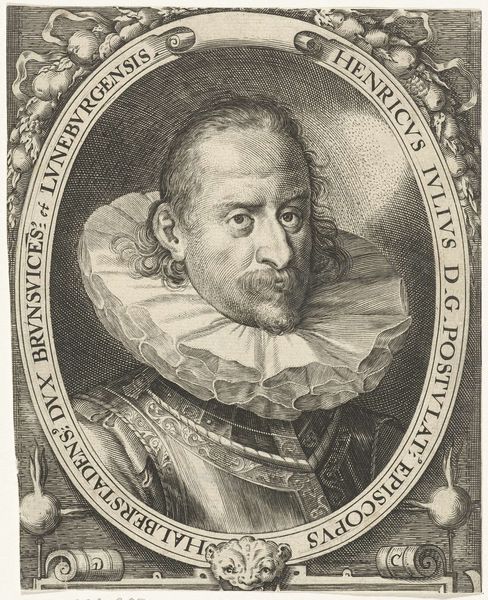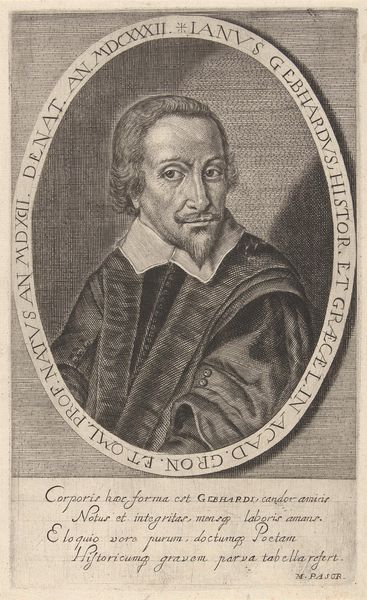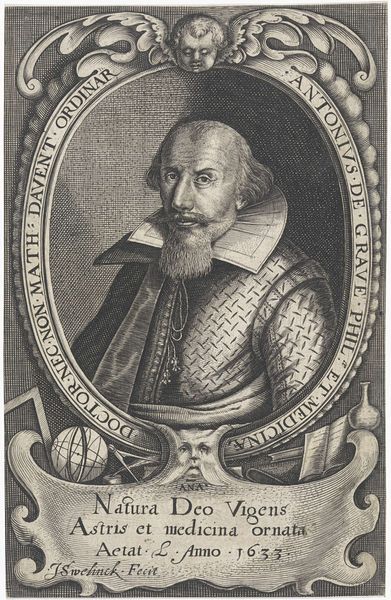
Dimensions: height 163 mm, width 111 mm
Copyright: Rijks Museum: Open Domain
Curator: This print, etched in metal by William Ridley around 1803, offers a glimpse into the life of Samuel Jackson Pratt. It’s a striking portrait rendered in engraving style, part of a larger historical narrative. Editor: My first thought? This guy looks intense! I mean, that stare could bore right through you. There's a definite weightiness to his presence, something both stern and oddly…melancholic. Curator: Indeed. Engravings like this, while ostensibly portraits, served important social functions. They solidified reputations, commemorated achievements, and visually broadcasted status to a wide audience. Editor: Status is definitely screaming from his fancy getup and those decorative family crests scattered about, framing his head like baroque thought bubbles. Curator: The detail here is extraordinary, considering the medium. Notice how Ridley uses the linear precision of engraving to create subtle variations in texture, from Pratt’s velvet coat to his wispy hair. Editor: That meticulous detail gives the image such gravity. Almost like the engraver felt some enormous responsibility to get this right, like he was making a historical record, etching not just a likeness but an entire era. Curator: Precisely. Portraiture in this style operated as a form of historical documentation. Ridley and his contemporaries consciously situated their subjects within specific socio-political contexts. Editor: You know, looking at this, I wonder what Pratt himself thought about all this fuss? Did he feel properly "immortalized," or was he just annoyed that he had to sit still for so long? I get such a mixed vibe of self-importance and slight discomfort. Curator: That tension might arise from the evolving social function of portraiture itself. While commissioned to project power, it was also beginning to grapple with the burgeoning Romantic notions of inner emotion. Editor: It’s all in the eyes, isn't it? Even rendered in sharp, unforgiving lines, there’s something profoundly human there. I think he wanted to be known for more than just lineage and title. Curator: It encourages me to revisit the nuances within traditional forms, to consider the people, the patrons, and the public role they all occupy. Editor: And it reminds me that every mark, every choice made by the artist, echoes down through history—a constant conversation across centuries.
Comments
No comments
Be the first to comment and join the conversation on the ultimate creative platform.
